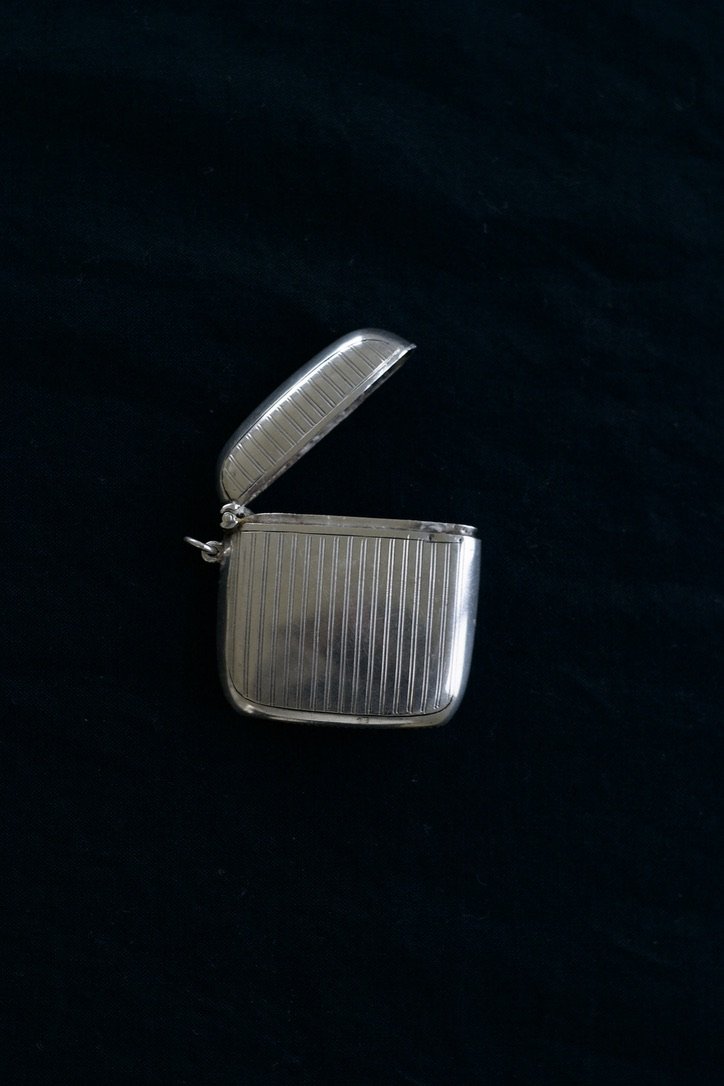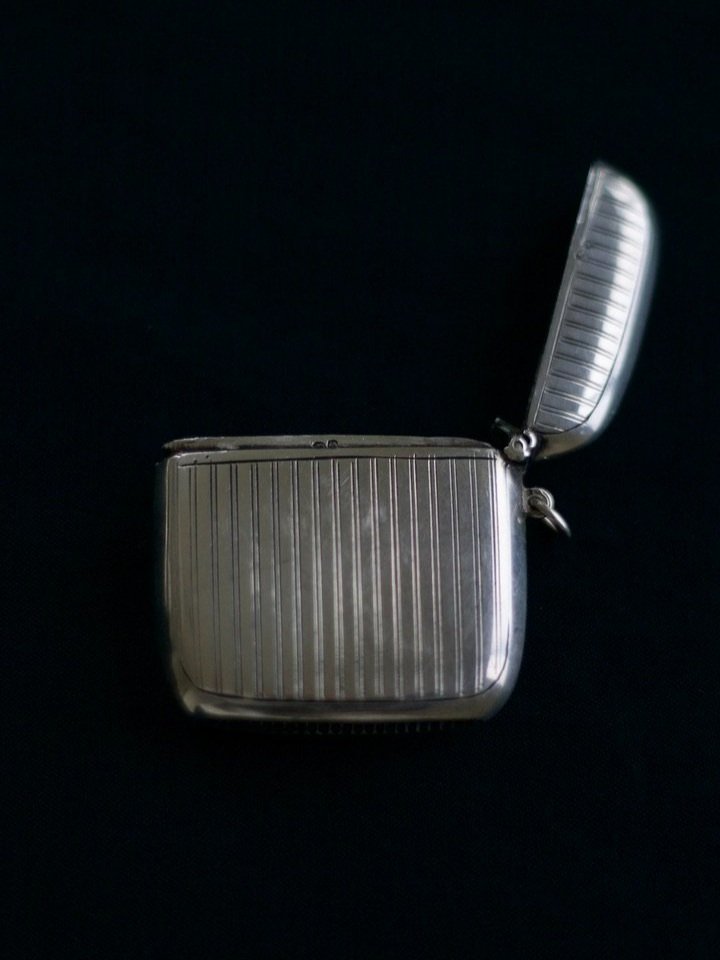Silver Striped Match Safe
Early 20th-century solid sterling silver vesta match safe. The hallmarks are pretty worn, but based on their shape and placement, it’s likely of Austro-Hungarian origin.
The bottom striker on this case is worn down and no longer functional but can still store matches or small objects.
The term "vesta case" comes from Vesta, the Roman goddess of hearth, home, and fire. Back in the 19th and early 20th centuries, people used these cases to carry Vesta matches—small, wax-coated wooden matches that could ignite just from friction. They were a bit more reactive than today’s safety matches, making them easier to light on a metal striker.
Early 20th-century solid sterling silver vesta match safe. The hallmarks are pretty worn, but based on their shape and placement, it’s likely of Austro-Hungarian origin.
The bottom striker on this case is worn down and no longer functional but can still store matches or small objects.
The term "vesta case" comes from Vesta, the Roman goddess of hearth, home, and fire. Back in the 19th and early 20th centuries, people used these cases to carry Vesta matches—small, wax-coated wooden matches that could ignite just from friction. They were a bit more reactive than today’s safety matches, making them easier to light on a metal striker.
Early 20th-century solid sterling silver vesta match safe. The hallmarks are pretty worn, but based on their shape and placement, it’s likely of Austro-Hungarian origin.
The bottom striker on this case is worn down and no longer functional but can still store matches or small objects.
The term "vesta case" comes from Vesta, the Roman goddess of hearth, home, and fire. Back in the 19th and early 20th centuries, people used these cases to carry Vesta matches—small, wax-coated wooden matches that could ignite just from friction. They were a bit more reactive than today’s safety matches, making them easier to light on a metal striker.




